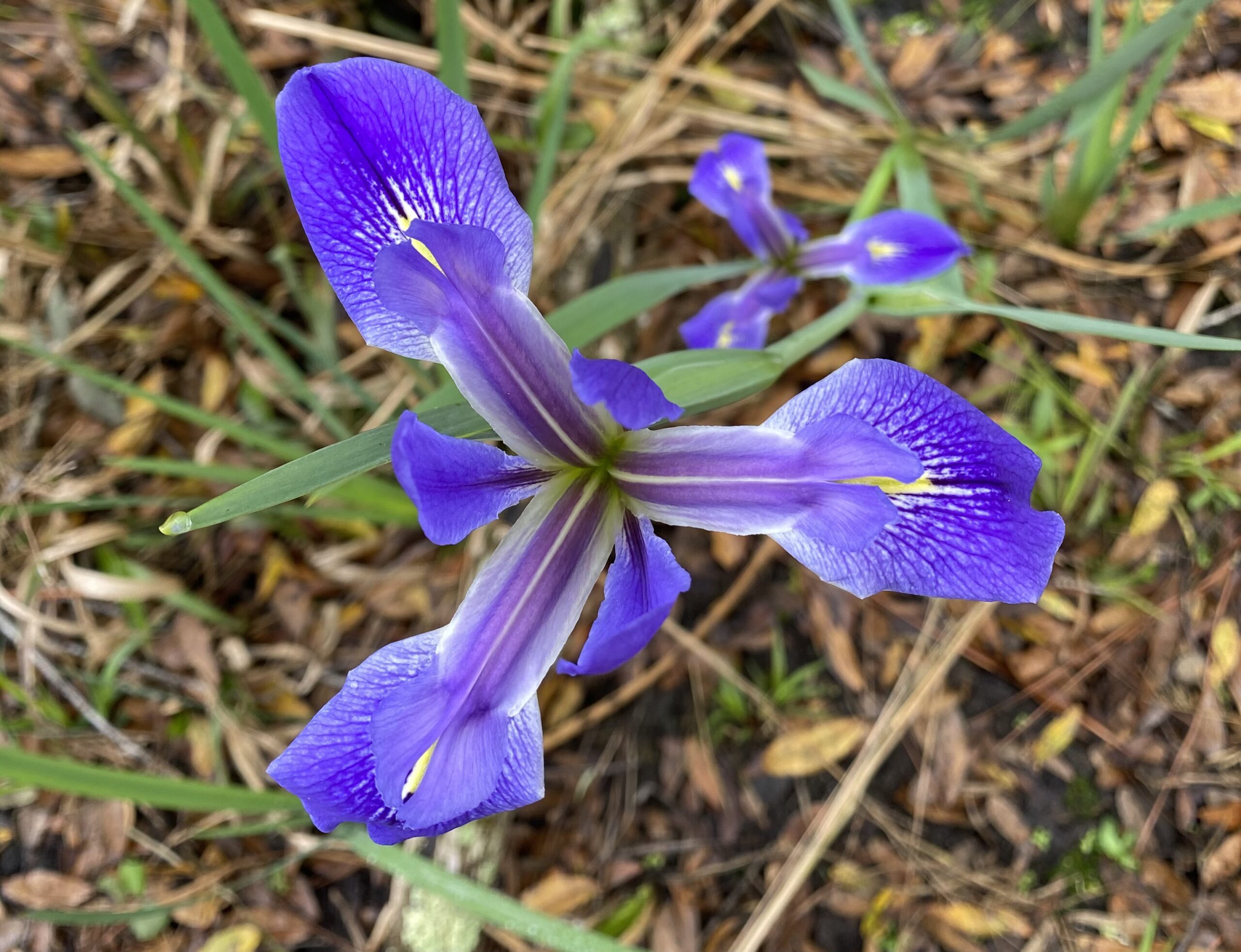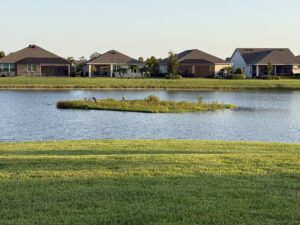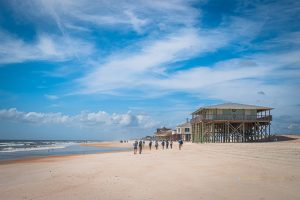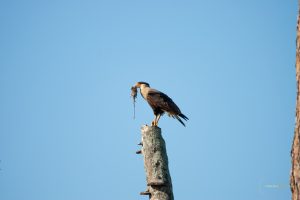Few flowers evoke the wild elegance of Florida’s wetlands quite like the iris. With their striking petals and intricate designs, irises seem to capture the essence of the landscapes they inhabit. Often associated with temperate gardens and cultivated spaces, several iris species thrive naturally in Florida, bringing color and function to its wetlands, marshes, and riverbanks. Beyond their beauty, these plants play an important role in ecological restoration, provide essential habitat for wildlife, and support pollinators that contribute to the balance of these rich ecosystems.
The Irises of Florida: Physical Characteristics
Florida is home to a handful of iris species, each with its own distinct personality and adaptations. The most commonly encountered include:
- Prairie Iris (Iris savannarum)
- Southern Blue Flag Iris (Iris virginica)
- Yellow Flag Iris (Iris pseudacorus) (non-native, but widely found in Florida)
Prairie Iris (Iris savannarum)
Often mistaken for its close relatives, yet the most common species in peninsular Florida, Iris savannarum is found mostly in the wet, open grasslands, marshes, and wetlands associated with pine flatwoods (depression marshes, cypress domes, bay swamps). It’s a plant of open skies and sun-drenched water edges, preferring habitats with high water tables and periodic flooding. The flowers are typically a soft blue to lavender with a delicate fragrance, perched above narrow, upright leaves that can reach two to four feet in height.
One of its most charming features is its resilience. Prairie iris thrives where others falter, enduring seasonal droughts and floods alike. It differs from Iris virginica in its more slender growth habit and narrower falls. These differences are subtle but meaningful to those who walk the wetlands and recognize the flora by more than just color.
Southern Blue Flag Iris (Iris virginica)
This species is one of the most widespread and well-known irises in the southeastern United States, although mostly found in North Florida. Standing between two to three feet tall, its sword-like leaves form a fan at the base of the plant, arching out like a spray of green ribbons. In spring and early summer, the Southern Blue Flag unfurls its violet-blue blossoms, each with three large, drooping petals (known as falls) adorned with intricate veining and a bright yellow signal patch that guides pollinators to the nectar within.
Yellow Flag Iris (Iris pseudacorus)
Unlike Florida’s native irises, the Yellow Flag Iris originates from Europe, North Africa, and western Asia. Though undeniably beautiful, with bright golden flowers and tall, sword-like foliage, this species has become invasive in some parts of North America. It thrives in wetland environments, forming dense colonies that can outcompete native vegetation. While beneficial to some wildlife, its aggressive growth can alter natural hydrology and reduce biodiversity in sensitive habitats.
While Florida’s native iris diversity is relatively limited, there are a few more species and notable variants that may be encountered in natural or semi-naturalized settings:
Carolina Iris (Iris hexagona)
- Flower Color: Blue to violet with greenish or yellowish veining
- Flower Size: 3 to 4 inches wide
- Notes: Native to northern Florida and the Gulf region; named for its six-angled seed capsule. Often confused with Iris savannarum, but typically found farther north and west.
Copper Iris (Iris fulva)
- Flower Color: Coppery red to reddish-orange
- Flower Size: 2 to 3 inches wide
- Notes: Rare in Florida, mostly in the Panhandle; prefers swamps, floodplains, and rich alluvial soils. Attracts hummingbirds with its unique flower color among native irises.
Giant Blue Iris (Iris giganticaerulea)
- Flower Color: Rich blue to purple with lighter veins and yellow signals
- Flower Size: 4 to 6 inches wide (largest native iris flowers in the U.S.)
- Notes: Native to the Gulf Coast region and rare in Florida, typically found in the Panhandle or near the western border; prefers swamps and marshes with deep, standing water.
Grass-leaved Iris (Iris tridentata)
- Flower Color: Deep violet to bluish-purple with narrow, pointed petals
- Flower Size: 2 to 3 inches wide
- Notes: The smallest of Florida’s native irises; found in moist pine flatwoods and wet prairies. Leaves are slender, almost grass-like, and form small clumps. Often blooms earlier than other species.
Cattails (Typha spp.)
Because they often grow side by side in wetland environments, irises are sometimes mistaken for cattails (Typha spp.), especially before either plant blooms. But with a closer look, their differences are easy to spot. Iris leaves are flat and fan-shaped at the base, sharply pointed, and have an iridescence that lacks in cattail leaves, along with a pronounced midrib that runs like a spine through the center. In contrast, cattail leaves are rounder in cross-section, more uniformly strap-like, and emerge in a spiral pattern from the base. Most notably, cattails produce their signature brown, sausage-shaped flower spikes (many jokingly refer to these as “wild corndogs”), while irises bloom with large, showy flowers in shades of blue, purple, or yellow, depending on the species.
Where Do Florida’s Irises Grow?
Irises are closely tied to water. They flourish in the margins of ponds, slow-moving streams, marshes, and swamps, where their rhizomes remain partially submerged or in consistently moist soil. These plants prefer rich, organic sediments that provide ample nutrients for their seasonal growth and flowering cycles.
The Southern Blue Flag and Savanna Iris are particularly well-adapted to Florida’s diverse wetland environments, appearing in:
- Cypress domes and strands
- Freshwater marshes
- Lake margins
- River floodplains
- Ditches and wet prairies
These irises are perennial, meaning they die back in the colder months and re-emerge each spring. Their ability to survive seasonal flooding and fluctuations in water levels makes them resilient and essential members of wetland plant communities.
Life History and Reproduction
Like many wetland plants, Florida’s irises reproduce both sexually (via seed) and vegetatively (through rhizome division). Their seeds, encased in buoyant pods, float on water currents, helping the plant disperse across new habitats. However, irises more commonly spread through their rhizomes, underground stems that send up new shoots each growing season. Over time, a single plant can form large, interconnected colonies, an adaptation that helps stabilize soils and prevent erosion.
The Role of Irises in Wetland Restoration
Irises are more than just a visual delight; they are also ecological powerhouses when it comes to wetland restoration and mitigation efforts. Their root systems filter excess nutrients from the water, improving water quality by trapping sediments and absorbing pollutants such as nitrogen and phosphorus. This makes them valuable allies in efforts to restore degraded wetlands, as they help mitigate the effects of agricultural and urban runoff.
Additionally, their ability to stabilize shorelines reduces erosion, protecting sensitive aquatic habitats from degradation. As wetland restoration projects across Florida seek to reestablish native plant communities, irises are frequently planted alongside other native species to enhance biodiversity and restore natural ecosystem functions.
Irises as a Haven for Wildlife
Beyond their role in shaping wetland health, irises provide vital resources for numerous species. Their blossoms serve as nectar sources for bees, butterflies, and other pollinators. The large, showy flowers of Iris virginica and Iris hexagona are particularly attractive to bumblebees, which land on the lower petals and follow the flower’s intricate patterns to access its nectar.
In addition to pollinators, irises contribute to the food web in other ways. Their foliage provides shelter for frogs, small fish, and aquatic invertebrates, while birds and mammals, including muskrats, occasionally feed on their rhizomes. Waterfowl nesting in Florida’s wetlands also benefit from the protective cover that iris colonies provide.
A Symbol of Wild Beauty and Ecological Importance
Florida’s irises are more than just picturesque wildflowers. They are integral to the health of wetland ecosystems, supporting pollinators, filtering water, and providing habitat for countless species. Their presence signals the vibrancy of Florida’s natural landscapes, a reminder of the intricate relationships that sustain these environments.
Whether growing in a remote marsh or along the edge of a backyard pond, these irises continue to weave their beauty and resilience into the fabric of Florida’s wetlands. By protecting and restoring the habitats where they thrive, we ensure that these stunning blooms—and the life they support—continue to grace the landscape for generations to come.



